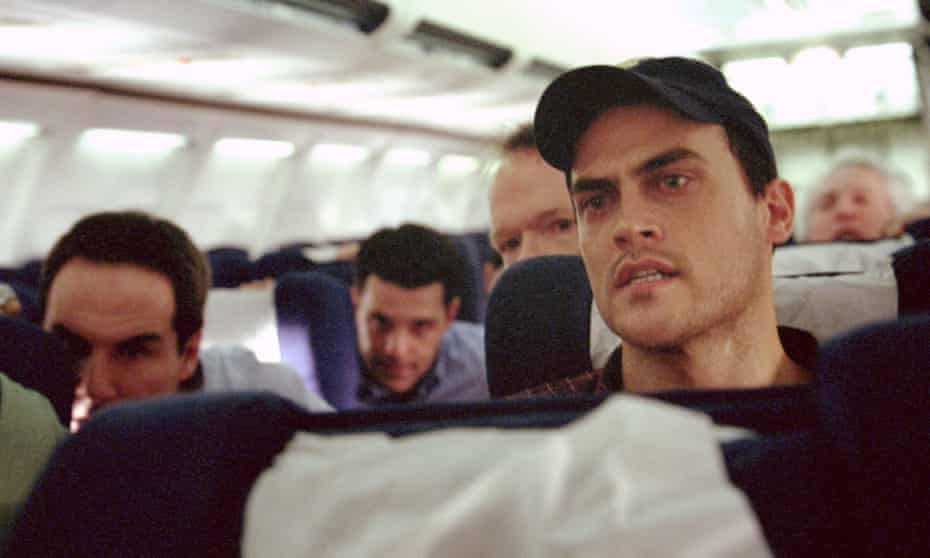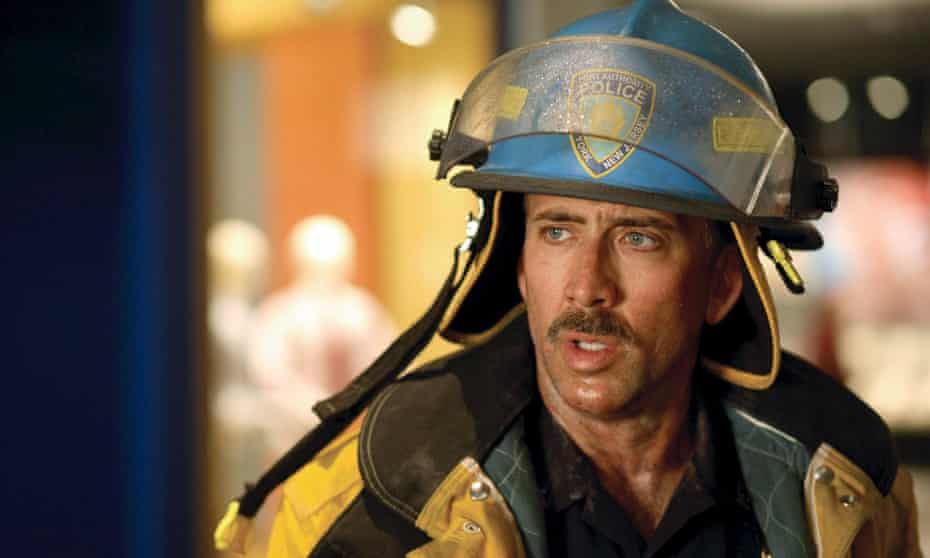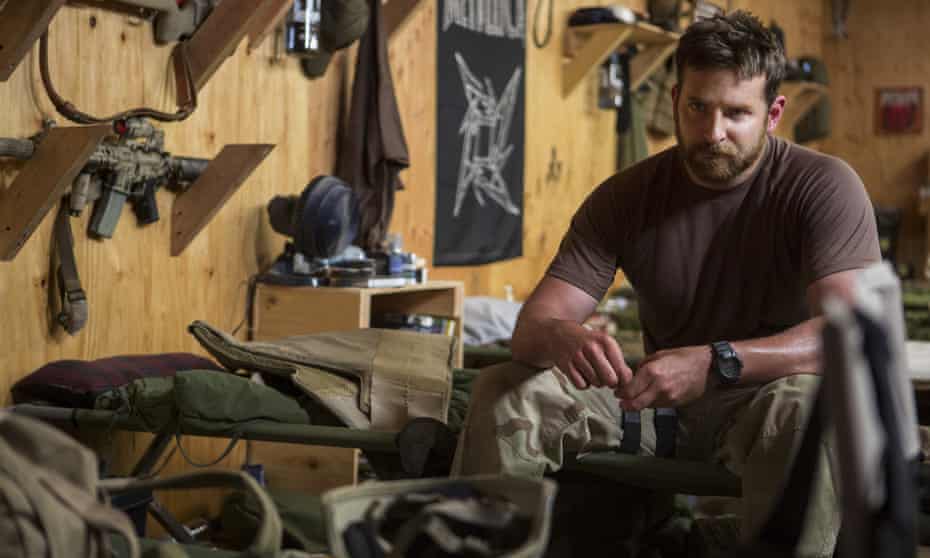A common refrain in the days after 11 September 2001 was that the scenes of unthinkable destruction looked like a movie. In some ways, it did: the World Trade Center had been destroyed on-screen in three late-90s blockbusters: Independence Day, Deep Impact and Armageddon. Overnight, movies with bombastic scenes of mass violence all but disappeared; for years afterwards, the attacks themselves, whose imagery saturated the national consciousness, proved too traumatic, too untouchable, to be reimagined for film or TV.
But 9/11 has loomed large over American pop culture in the 20 years since the attacks. As critic James Poniewozik put it, writing about the slate of documentary retrospectives for the anniversary, 9/11 is culturally not so much a day as an era. The attacks have echoed across TV and film – in superhero films and action flicks that pit American heroes against destruction of large cities; in commercially cursed “war on terror” films preoccupied with the pain and patriotic resolve of American soldiers or the fantasy of torture as a successful war tactic; and in the handful of films which have focused on the tragedy directly, such as United 93, World Trade Center and, more recently, Worth.
The attacks on 9/11 had an immediate, seismic effect on pop culture – just hours afterwards, Hollywood studios began digitally erasing the Twin Towers from posters and films such as Zoolander, Serendipity, Sidewalks of New York and People I Know. In the tense months that followed, “many others were delayed, re-edited, changed or scrapped entirely with studios fearful of offending audiences as America tried to process the culturally traumatic event,” said Terence McSweeney, a film and television scholar at Solent University Southampton and editor of the academic essay collection American Cinema in the Shadow of 9/11.
But within a few years, what was once thought too traumatic became fodder for cinematic reinterpretation – if not directly, then as allegorical stories, beginning in 2005 with Steven Spielberg’s War of the Worlds, which depicted ash-strewn urban destruction. “9/11 reinformed everything I’m putting into [the film],” Spielberg said of the movie, based in the 1898 HG Wells novel. “We now know what it feels like to be terrorized.”
By 2006, five years after the attacks, some studios were open to addressing the attacks head-on. Tim Bevan, a producer for United 93, didn’t recall any significant pushback or calls of “too soon” at the film’s studio, Universal, at the time of production, he told the Guardian, owing in large part to writer/director Paul Greengrass’s reputation for sensitive and accurate portrayals of real-life political violence, such as in Bloody Sunday, on the 1972 shootings in Northern Ireland.

Both Bevan and Greengrass said the project only proceeded with the cooperation and blessing of the families who lost loved ones onboard the flight – the final hijacked plane, bound for Washington DC, which crashed into a field near Shanksville, Pennsylvania after passengers stormed the cockpit. “If they had not wanted me to make it, I would not have made the film,” Greengrass said to the Guardian.
World Trade Center, Oliver Stone’s film released three months later, focused primarily on two Port Authority police officers, played by Nicolas Cage and Michael Peña, surviving hours trapped beneath the wreckage of Ground Zero. United 93, in contrast, skips between three hyper-specific theaters of dawning horror: domestic air traffic control, military headquarters and the plane itself, which flew for 40 minutes after the hijacking.
At the time, Greengrass felt “the true scale” of the passengers’ heroism “had not been seen”. The intent of the film was to avoid politicization, “to try and find a way of telling it as simply as possible”, he said. “And if you tell that story as neutrally as you possibly could, then you would find meanings that were different from the ones that were given to the event and more complex and nuanced.”
Greengrass said he aimed his film at the gap between observers of a tragedy, who feel impersonal grief, shock and sadness followed by a strong desire to return to normal, and families whose loss precludes any sense of normal ever again. “When people say ‘it’s too soon,’ I say, ‘well, it’s not too soon for the families,’” he said. “There is a too soon, and there’s definitely a wrong way to make those films,” he added, but maintained United 93 was “made with the highest care, to the highest, scrupulous standards, with those families”.
Those standards included a meticulous research process and a massive, granular timeline of the day’s events – weeks of mapping known details for the purpose of “disinterring truth from convenient political fiction”, said Greengrass.
Still, the hyper-realism, while perhaps instructive now for viewers too young to have personal memories of shock and disbelief, met with mixed reviews at the time. Stephanie Zacharek, a longtime New York-based film critic, called the film “brilliantly crafted” and “adamantly unexploitative” but still “the most excruciating moviegoing experience of my life”. The Guardian’s Peter Bradshaw, in 2006, called United 93 a “head-on act of courage”, in favorable comparison to World Trade Center, “an act of sentimental primitivism” and a “shaming spectacle”.

Audience discomfort with reliving the attacks directly is perhaps why there are only a handful of films which tried – Reign Over Me, and parts of Remember Me and Extremely Loud and Incredibly Close. Instead, post-9/11 fears and anxieties have filtered into action films, such as Cloverfield, Battle: Los Angeles and 2012, that weren’t nominally about political violence but included staples of 9/11’s iconography: collapsing buildings, ash, dust-covered civilians.
The same anxieties have shaped the superhero movies which have dominated the global box office in the 20 years since 9/11, films which consistently stage existential conflicts pitting complicated American heroes against assured destruction of large American cities. “If any genre proves to us that the shadow of 9/11 still looms large in popular culture it is the superhero film where 9/11 continues to be restaged and refought in allegory by very American heroes,” said McSweeney. Films such as Avengers: Age of Ultron, evoke famous imagery from the attacks; as a whole, superhero movies, as Vox put it in 2015, have become “an endless attempt to rewrite 9/11” into a day when no one had to die.
The same goes for one of the most popular TV shows of the 2000s: Fox’s 24, which directly responded to widespread desire to thwart terrorist attacks. The show, starring Kiefer Sutherland as counter-terrorist agent Jack Bauer, was in development before the attacks; the first episode, in which a plane exploded, had to be recut to lessen the parallels. Later seasons played out a fantasy of American preparation and derring-do – as well as the false utility of torture – that played on post-9/11 fears of Muslim terrorists. The second season incorporated Islamist terrorists, advertised with billboards that read “they could be next door.” (Producer Howard Gordon later said this was his biggest regret.) A fourth season plotline in which a Muslim American family leads a double life as radical terrorists was so controversial that the Council on Islamic-American Relations sat down with 24 producers, leading Sutherland to read a disclaimer PSA on-air.
Criticism of simplifying, stereotyping, or ignoring Muslim or Arab characters – honestly, the subject of a whole separate essay – also dogged the small genre of films which portray the global “war on terror”. The most critically acclaimed – Kathryn Bigelow’s The Hurt Locker and Zero Dark Thirty – hewed closely to the steely determination, rooted in patriotism and duty, of the American solider, and the mental and physical effects of never-ending wars more complicated and ambiguous than initially sold to the public. Zero Dark Thirty in particular hinged on the utility of America’s torture of prisoners, a practice exposed and debunked (as seen in one of the most critical “war on terror” films to date, Amazon’s The Report in 2019).

None of these “war on terror” films were standouts commercially, with the great exception of Clint Eastwood’s American Sniper in 2014, which is “absolutely the defining American film of the post-9/11 era”, said McSweeney. The film, written by Jason Hall and based on the life of the Navy Seal sniper Chris Kyle, made $547m at the box office – more than all prior films about the “war on terror” combined. American Sniper was unusually lucrative in large part, according to McSweeney, because it told “the story of the war in Iraq the way Americans would like to remember it, not as a deeply morally ambiguous conflict founded on a lie, but one fought for good reasons, by virtuous men, against a monstrous Other”.
That has been a through-line with pop cultural echoes of 9/11 – the simpler, more coherent, and morally unambiguous the storyline, the more popular the project. Life, of course, doesn’t work that way, which makes the latest film to tackle an aspect of 9/11, Netflix’s Worth, released this month, all the more daring. Directed by Sara Colangelo from a screenplay by Max Borenstein, Worth focuses on the thorny, imperfect work of devising and administering the 9/11 Victims Compensation Fund, which provided over $7bn to families of 9/11 victims (the program was approved in large part as a way to avoid airline industry-crippling lawsuits). Colangelo’s film orbits around real figures: Kenneth Feinberg (Michael Keaton), the mediation expert who served as special master of the fund, Camille Biros (Amy Ryan), his legal partner in charge of gathering families’ claims, and Charles Wolf (Stanley Tucci), a 9/11 widower who led a group of survivors opposed to the fund’s methodology and, more pointedly, emotional distance from their grief.
Given the weight of the subject matter, “my first instinct was to not get into the project,” Colangelo told the Guardian. Footage of the attack, a formative moment in her young adulthood, “ignites a certain anxiety in me”; she had not seen other 9/11 movies before Worth. But Colangelo had a “complete 180” after seeing Borenstein’s script – the focus on the Victim Compensation Fund “wasn’t fetishizing the tragedy”, she said. “I didn’t have to relive it, sort of like United 93 or something.” She preferred the project’s exploration of effects rather than causes or revivified timeline. “It felt like a script about surviving, not about death. Now that you’ve survived this, what do you do? And what do you do in the wake of this loss?”
Worth is a thoughtful, quiet film, the attack and its chilly, hollow aftermath portrayed in glimpses rather than direct stares – a shot of a television screen with smoking towers, frantic phone calls at 8.42am on the Amtrak to New York, a chicken picante left by Wolf’s wife sitting in the fridge. The film takes place mostly in corporate office buildings, as Feinberg and his team embark on the impossible task of putting dollars and cents to someone’s brother, husband, daughter, sister, wife, son, domestic partner unrecognized by the state. “I was really interested in delving into it, and particularly the moral conundrum of it all,” Colangelo said. “How does math and the calculation of dollars and cents collide with the raw emotion of 9/11 and the heartbreak of thousands of families?”
The film’s use of actual footage from the attack – now a difficult question of sensitivity – is limited to glances at television screens, or reflections in windows; in one scene, Keaton’s Feinberg wakes in the living room chair before news footage of the attack, which ran on an inescapable loop at the time. “I wanted to depict that reality accurately, but without being exploitative,” said Colangelo. Similar sensitivity guided the use of voicemails, anecdotes, and phone calls from victims’ families, which were composites from real artifacts. “We were very eager to protect everyone’s privacy,” said Colangelo, “but we also wanted to make the portrayal accurate.”
Worth, after a well-received premiere at the 2020 Sundance film festival, has had somewhat of a muted release on Netflix. The trickiness of converting recent, raw (even two decades later) tragedy into entertainment is not limited to 9/11 – films on the BP oil spill in the Gulf of Mexico (Deepwater Horizon), the 2013 Boston Marathon bombing (Patriots’ Day and Stronger) and even Michael Bay’s lionized take on the 2012 American embassy attack in Benghazi (13 Hours), have had middling to limp box office performances. Perhaps we live in a time of too immense saturation with disaster, and its inescapable, lacerating images, to engage with fictionalized immersions of the real events. Or that it’s human instinct to prefer clear, unambiguous stories – ones that rewrite an un-processable disaster, or distill it to a righteous purpose. With 9/11, Americans have tended to prefer narratives of anger and revenge (Zero Dark Thirty, American Sniper) over explorations of grief (Worth) , culpability (The Report), or the jagged, difficult, ongoing work of keeping on.
from WordPress https://ift.tt/3Eh2dzA
via IFTTT


No comments:
Post a Comment